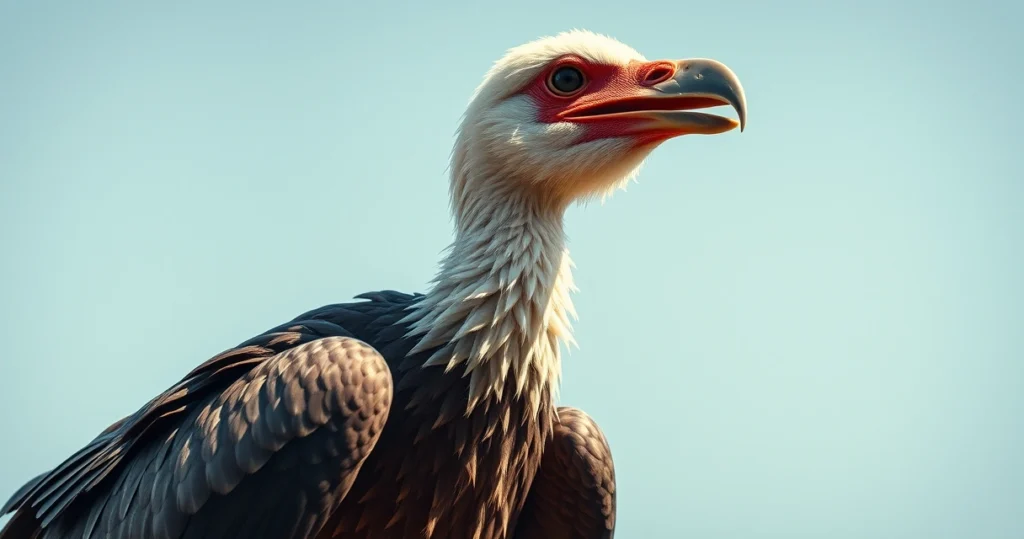The concept of resurrecting extinct species has long captivated the imagination of scientists, filmmakers, and the general public. Recently, a biotech firm has garnered attention for its ambitious project aiming to revive a giant bird species, with the backing of renowned director Peter Jackson. Known for his cinematic adaptations of J.R.R. Tolkien’s works, Jackson has been an avid supporter of paleontological endeavors since 2024, particularly through his extensive collection of giant bird bones. This article explores the intricacies of this groundbreaking initiative, the science behind de-extinction, and the implications it holds for the future of conservation and biotechnology.

The Giant Bird: A Brief Overview
Before delving into the biotech firm’s efforts, it’s essential to understand the giant bird species in question. Various species of large birds have existed throughout history, including the infamous Moa of New Zealand and the Argentavis from South America. These birds, which could reach heights of over 10 feet, were flightless and served as apex herbivores in their ecosystems.
The Moa: A Case Study
The Moa, in particular, serves as a critical focus for the biotech firm’s project. This remarkable bird was driven to extinction by human activity and habitat loss in the 15th century. Despite its extinction, the Moa’s remains have been well-preserved, providing valuable genetic material for researchers. The efforts to revive such a creature involve extracting DNA from these remains and utilizing advanced genetic engineering techniques.
The Role of Biotechnology in De-Extinction
Biotechnology has made significant strides in recent years, particularly in the fields of genetic engineering and cloning. The science of de-extinction aims to utilize these advancements to bring back species that have vanished from our planet. The biotech firm involved in this project is focusing on several critical methodologies:
- DNA Extraction: The initial step involves isolating viable DNA from the preserved bones of the giant bird.
- Genome Sequencing: Once extracted, the DNA will be sequenced to reconstruct the bird’s complete genome.
- CRISPR Technology: The CRISPR-Cas9 gene-editing tool will be employed to modify the DNA of a closely related bird species, potentially creating a hybrid.
- Cloning Techniques: After modifying the DNA, cloning techniques may produce embryos that can be implanted into surrogate birds.
The Challenges Ahead
While the science of de-extinction presents exciting possibilities, it is fraught with challenges. Key hurdles include ensuring the viability of the extracted DNA, ethical considerations surrounding cloning, and the ecological implications of reintroducing a species that has been absent for centuries.
Peter Jackson: The Advocate for Paleontology
Peter Jackson, celebrated for his cinematic vision in “The Lord of the Rings,” has emerged as a significant supporter of paleontology through his investment in the biotech firm. His fascination with extinct species is well-documented, and his substantial collection of giant bird bones underscores his commitment to this cause.
The Intersection of Film and Science
Jackson’s involvement highlights an interesting intersection between film and science. His storytelling prowess has the potential to ignite public interest in paleontology and conservation efforts. By aligning himself with a biotech firm aiming to revive the giant bird, Jackson hopes to inspire future generations to appreciate the importance of biodiversity and the implications of extinction.
The Implications of Resurrecting Extinct Species
The prospect of resurrecting extinct species raises numerous ethical, ecological, and scientific questions. While some argue that bringing back species like the Moa could help restore ecological balance, others caution against the unforeseen consequences of such actions.
Ethical Considerations
One of the most pressing concerns surrounding de-extinction is the ethical implications of playing “God” with nature. Questions arise about the welfare of the resurrected species, their ability to adapt to modern ecosystems, and the potential displacement of existing species. These considerations must be addressed comprehensively to ensure responsible scientific practice.
Ecological Balance
Reintroducing a species that has been extinct for centuries could disrupt existing ecosystems. The giant bird’s role in its native environment must be examined to assess the potential impact on current species populations and habitats. Understanding these dynamics is crucial for making informed decisions about such resurrection efforts.
Future Prospects and Public Interest
The ongoing project to revive the giant bird has sparked significant public interest, driven in part by Peter Jackson’s involvement. As the firm progresses with its research, it will likely attract media attention and funding, paving the way for further exploration of de-extinction technologies.
Public Engagement
Engaging the public in discussions about biotechnology and conservation is vital for fostering understanding and support. Initiatives such as documentaries, educational campaigns, and interactive exhibits can help bridge the gap between science and public perception, making complex topics more accessible.
Potential Collaborations
Collaborations between biotech firms, universities, and conservation organizations could enhance research efforts and provide additional resources. Such partnerships can promote interdisciplinary approaches to tackle the challenges of de-extinction and biodiversity conservation.
Frequently Asked Questions (FAQs)
1. What is the giant bird that the biotech firm is trying to revive?
The giant bird in question is most likely the Moa, a flightless bird that became extinct in the 15th century due to human activities.
2. How does biotechnology play a role in de-extinction?
Biotechnology enables researchers to extract DNA from extinct species, sequence their genomes, and utilize techniques like CRISPR for genetic modifications and cloning.
3. What challenges does the project face?
Challenges include the viability of ancient DNA, ethical implications, ecological impacts, and potential displacement of existing species.
4. Why is Peter Jackson involved in this project?
Peter Jackson is an advocate for paleontology and has invested in the biotech firm due to his fascination with extinct species and his extensive collection of giant bird bones.
5. What are the potential benefits of reviving extinct species?
Reviving extinct species could restore ecological balance, enhance biodiversity, and provide opportunities for scientific research and education.
Conclusion
The ambitious project to revive a giant bird species, backed by Peter Jackson, stands at the intersection of science, ethics, and public engagement. While the potential benefits of de-extinction are significant, the associated challenges cannot be overlooked. As biotechnology continues to advance, it is crucial to approach such endeavors with caution, ensuring that we learn from the past while paving a sustainable future for our planet’s biodiversity. The marriage of paleontology and cutting-edge technology promises a fascinating journey ahead, one that may redefine our understanding of extinction and conservation.
📰 Original Source
Este artigo foi baseado em informações de: https://gizmodo.uol.com.br/biotech-do-lobo-agora-quer-ressuscitar-ave-gigante-com-ajuda-de-peter-jackson/



